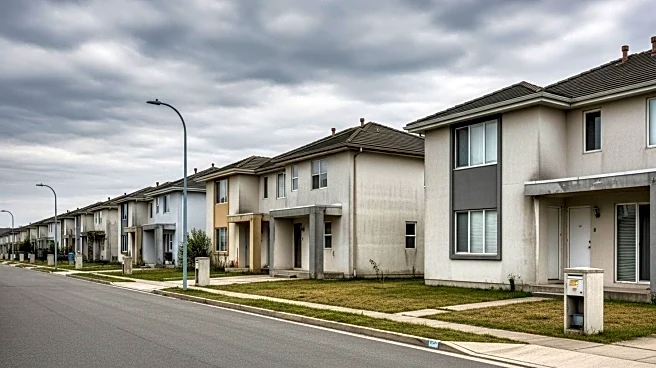What is the story about?
What's Happening?
Single-family rent growth in the United States is experiencing a slowdown, with July's rent prices increasing by only 2.3% compared to the same month last year. This marks a decline from the previous year's average rise of 3.1%, according to data from Cotality. The slowdown is evident across various metro areas and price tiers, with high-end properties seeing a reduced annual gain of 2.9%, down from 3.2% last July. Chicago leads the largest metropolitan markets with a 5.1% rent growth, followed by New York City at 3.7%. In contrast, Miami has seen no rent growth, a stark change from the 40% increase during the pandemic-driven migration in 2022.
Why It's Important?
The weakening rent growth in single-family homes could have significant implications for the real estate market and economic stakeholders. As consumer struggles increase, landlords may need to adjust their strategies to meet changing demands. This trend could affect single-family rental REITs, which have been expanding rental communities to meet high demand. The slowdown may prompt these entities to reconsider their investment strategies, potentially impacting the supply and demand dynamics in the housing market.
What's Next?
If the trend of slowing rent growth continues, it may lead to adjustments in rental pricing strategies and investment decisions by major stakeholders such as REITs and real estate investors. The market may see a shift towards more affordable housing options or increased competition among landlords to attract tenants. Additionally, policymakers might consider interventions to address housing affordability and stability.
Beyond the Headlines
The cooling of rent growth in traditionally high-demand areas like Los Angeles and Miami suggests a potential shift in consumer preferences and economic conditions. This could lead to broader discussions on housing affordability and the sustainability of current real estate investment models.
AI Generated Content
Do you find this article useful?














